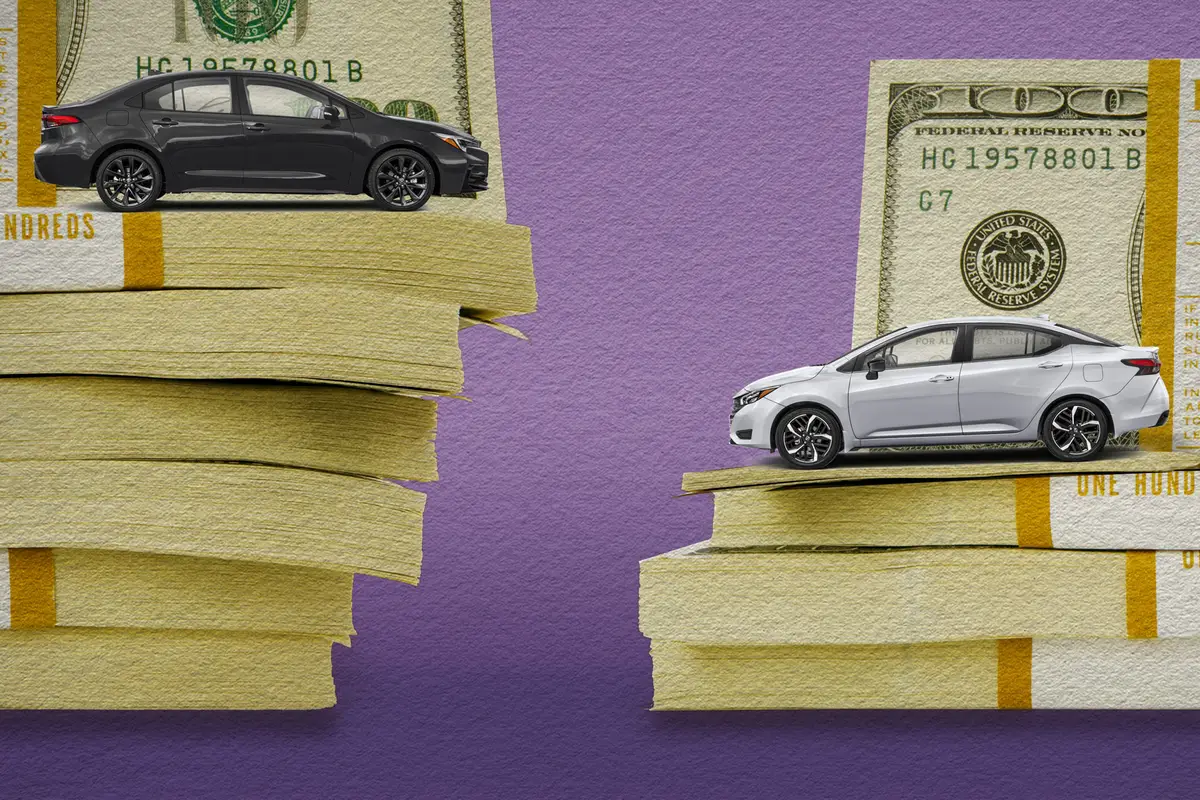AZCentral.com's view
Chevrolet is ending the reign of its popular pony car with this bright-red Camaro SS convertible, festooned with checkered-flag graphics and badges celebrating its 35th anniversary. This one’s pretty hard to miss, not just because of its brash appearance but also its thunderous exhaust note under acceleration. Pure motor music.
Unfortunately, the special edition not only marks Camaro’s 35th anniversary but also serves as a last hurrah for this mainstay of sporty muscle cars. Camaro and its Pontiac twin, Firebird, go away after this model year, much to the consternation of several generations of loyal fans.
The special edition SS is also the most expensive Camaro ever offered, adding almost $7,500 to the standard-issue Z28 for a stunning $37,460. That kind of defeats the affordable-performance image that Chevy has worked so hard to build for Camaro. Especially considering that the base, V-6 model starts at about $18,000.
The SS convertible, outfitted with a six-speed manual transmission and a powerful V-8, upped to 325 horsepower from the standard 310, is certainly a top-drawer performer. But really, that’s a scary price for a Camaro, considering the formidable list of competitors in this price range.
Raw and raucous, the SS convertible puts the Camaro formula to the test. The SS is very fast, with so much torque and high-revving power that shifting gears becomes a subjective exercise. At 60 mph, you could be driving reasonably in third, fourth, fifth or sixth gears, depending on needs and conditions.
The six-speed in the Camaro is different from those in such Europeans as BMW and Mercedes-Benz , which are close-ratio units that use the six speeds across the board. For Camaro, the transmission is a normal five-speed with a very high sixth gear added on.
Sixth gear is an over-overdrive gear with a 0.5 ratio that allows the Camaro to rumble along at 75 mph with the engine burbling just above idle. The result is a 28 miles per gallon highway mileage rating.
Shifting is rather heavy but precise, definitely enhancing the actual performance and perceived sportiness.
Camaro is sharply maneuverable, but it still feels wide and heavy. Though the curb weight may be ponderous, Camaro’s responsive steering, firm suspension and fat performance tires help it handle and perform better than the numbers would indicate. But the back tires on the solid rear axle feel ready to break loose at the least provocation. That was reinforced driving in the rain, when a goose of the throttle would provoke garish fishtails.
My major beef with Camaro is the interior, which is hopelessly cramped, especially in relation to the size of the exterior. Space for a tall driver is not too bad, though hardly what it should be. Any front-seat passenger will find cramped legroom and a big, intrusive hump in the floor which, I’m told, is for the catalytic converter. The two rear seats are ho peless, comfortable only for small children or really tiny adults.
The top, made out of good-looking black fabric, folds easily with the push of a button. The rear window is real glass instead of fragile plastic. The tonneau cover over the folded top is a pain to install.
The leather interior, complete with 35th anniversary badges and embroidered seat backs, feels more lush and accommodating than other Camaros in recent memory. With its long-legged performance, this car calls out for a road trip.
The special edition SS convertible adds considerable options to the already well-equipped basic package, including the higher engine performance; 35th anniversary and SS graphics and badges; and SS wheels, force-induction hood and unique rear spoiler.
Despite Camaro/Firebird’s waning fortunes in recent years, I’d expect Chevy dealers to sell plenty of these 35th anniversary models, both to the keepers of the faith and to those who want to get a last ste of American muscle, GM style, before it’s gone forever.
A future collector’s item? Who knows?
Latest news



